It was already more than a week, After visiting Agra we returned New Delhi again. Delhi was crowded but it also has a lot of important, beautiful and historical places to visit too. It was our two weeks visit to India. I was together with Anita and my little hero Kaustuv.
My first experience in Delhi was paying the double parking at the airport as the driver did not understand and notice us for the first time on our arrival. So from the next day, I asked my hotel to provide me a vehicle with a Nepali driver.
Ram Bahadur Lama was our driver plus guide in our India Visit, he was so helpful and smiling person. Today after taking us at Birla Temple in the morning. Then we visited to India Gate and parliament house.
Qutab Minar was a wonderful structure that is made from red sandstones in New Delhi. Though we already visited TAAJ MAHAL which was an amazing peice of art in the world mad up of precious stones like jasper, jade, marble and crystaIs.I asked myself a question, Why is the monument so great? And … Is there any specific reason to build such a tall building or was it just a wish from the person who built it? Well then, the exact reason is supposed to have something to do with the commemoration of a victory. The Mughals used to build such towers to proclaim and celebrate victories. Some say that the minaret was used to offer the prayer, since it is so loud that anyone can be heard to climb to the top. Likewise, the minaret is not linked to the Qutuddin mosque, nor to the Iltutmish mosque. The surprising thing is to have before our eyes the tallest stone tower in India.
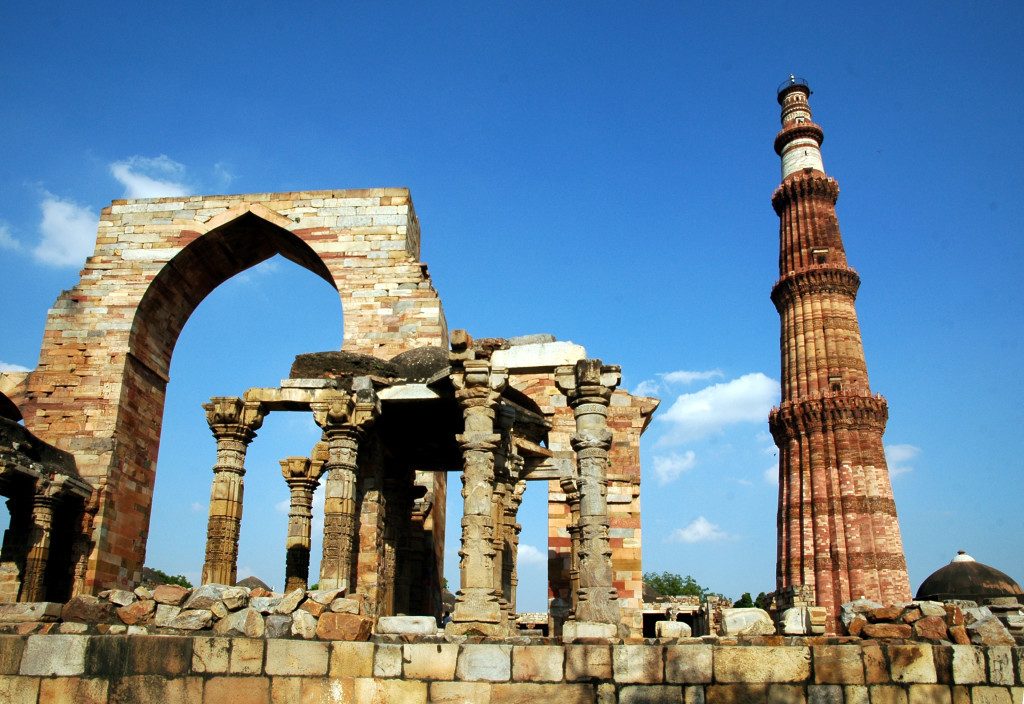
Qutab Minar is one of the tallest and most famous crafted towers in the world. The minaret has a height of 73 meters and the highest single tower in the world. Other important towers in the world are the Great Pagoda in Beijing (China) and the Leaning Tower of Pisa (Italy), but none of these towers are not as high as the Qutab Minar in Delhi , which is why the Qutab Minar tower is special.
According to history books , and my own travel guide, the minaret was started by Prithviraja or his uncle Vigraharaja who took Delhi after winning the battle against Rajputs. However, it is assumed and historians believe that Qutubuddib and Iltutmish had already completed the construction of the minatere when Prithviraj or Vigraharaja began to rule in Delhi. In any case, the official date of construction of the minaret is 1200 AD and since then this tall structure has been upright to never lose sight of the beautiful city of Delhi. When Alauddin returned from the wars in the Deccan, he thought of building a Victory Tower similar to Qutab Minar. But it was only in ruins of this initiative or project that can be seen next to the Qutbuddin mosque.
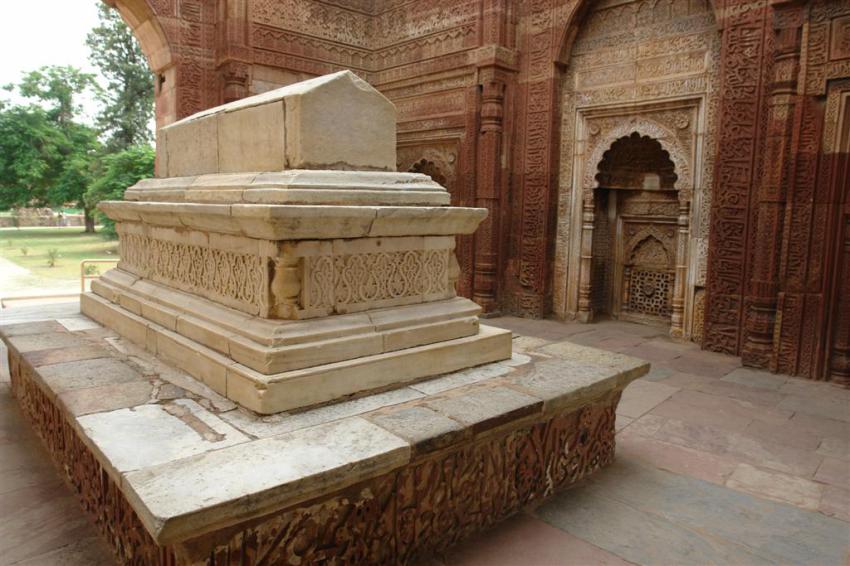
The tombs and mausoleum of the ltutmish were built between 1210 and 1236. In this tomb lie Shams-ud-din Iltutmish, third ruler of the Mamluk dynasty of Delhi of Turkish origin. Initially he was a slave of Qutb-ud-din Aibak but later became his stepson and his nearest lieutenant.
Like the wonderful Taj Mahal , the Qutab Minar is another great masterpiece of Mughal architecture. It has a number of floors or floors that have beautiful carvings and sculpted shapes such as the tomb of Iltutmish. There are inscriptions around the whole tower and the inscriptions reveal that it was the Iltutmish who finished the construction of the tower. The structure of the wall is built from the way it widens from top to bottom, only to make the Minaret strong.
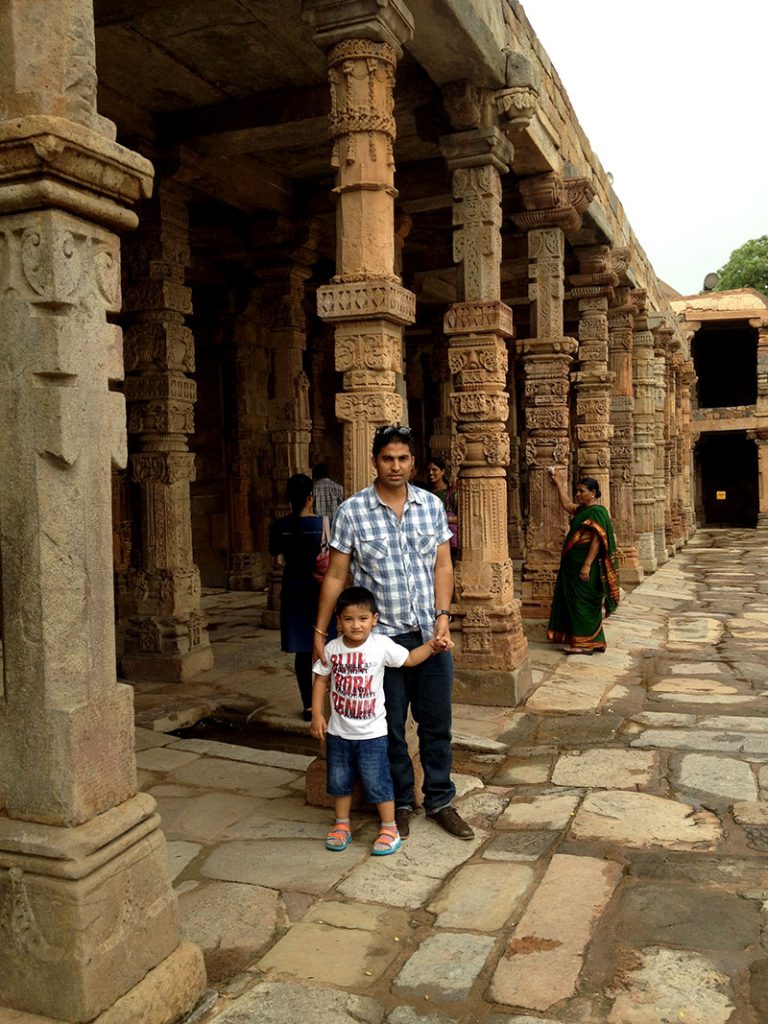

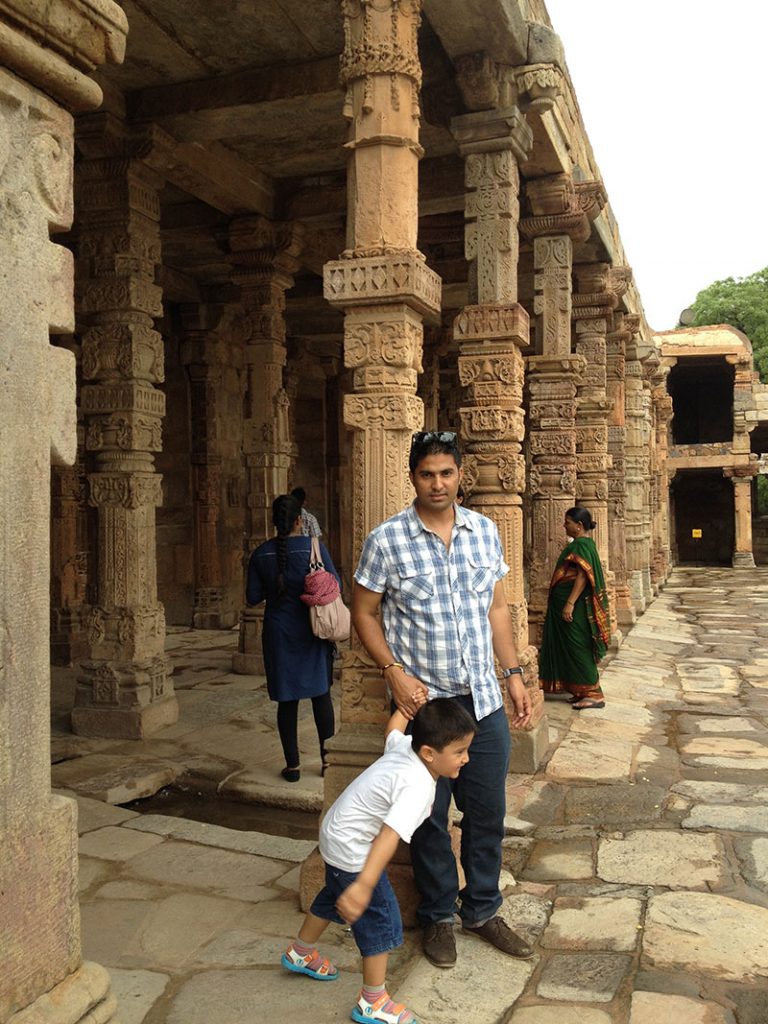
The architectural detail that surrounds the minaret is impressive, carved by hand, shows us the wealth and power of those who built the Qutab Minar. Under the balcony you can see details of mocárabes corbels. On the balcony itself you can see panels of inscriptions in Arabic calligraphy ornamented the balcony round. The decorative motifs on the upper levels of the Qutab Minar show a fusion of Hindu and Muslim elements.
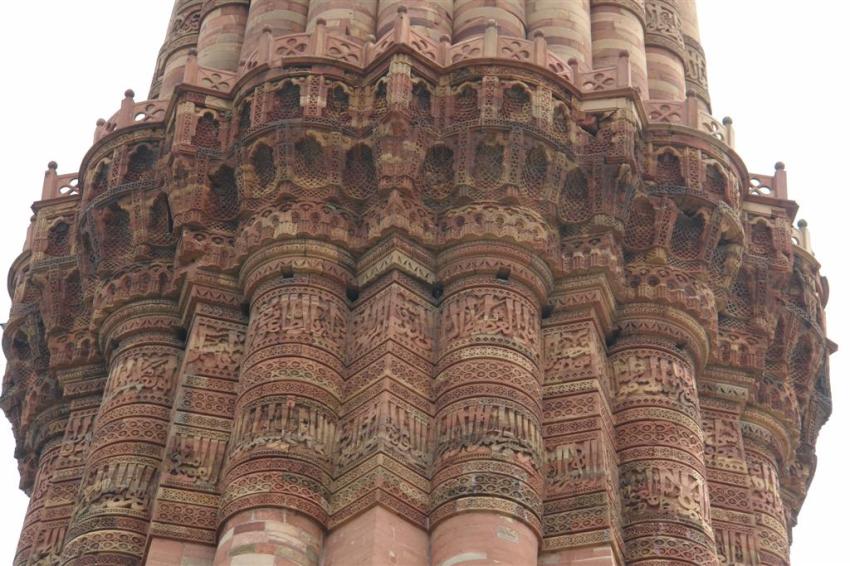
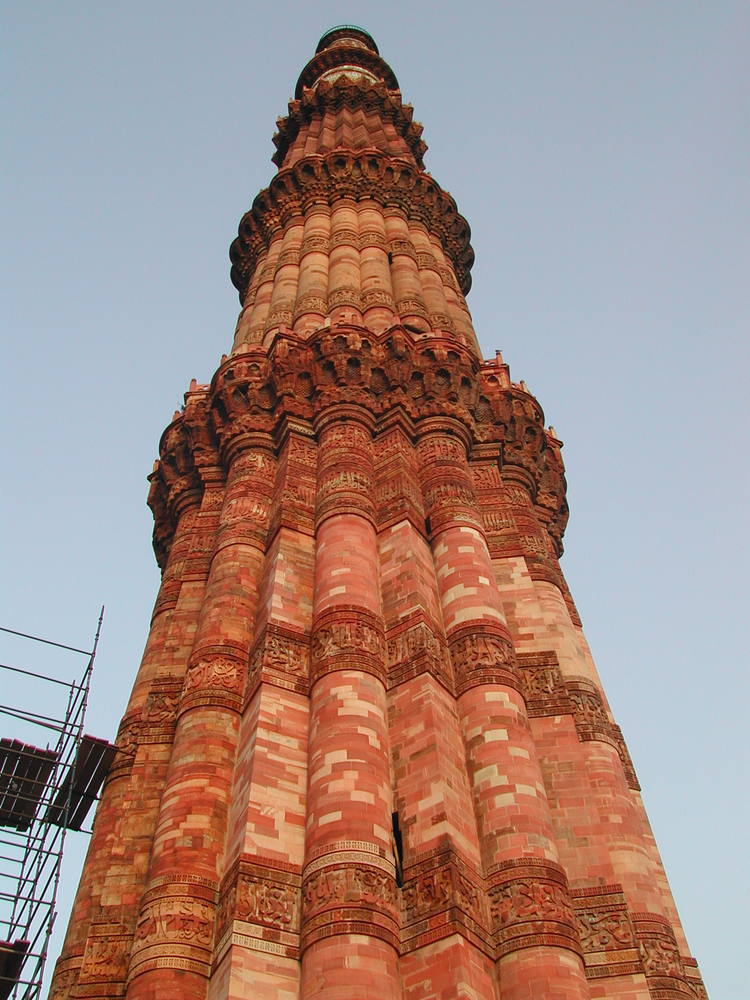
Going up to the top of the Qutab Minar is a wonderful experience, where … I recommend, to forget the fatigue that means going up, going down the stairs. It has 378 steps, so you can imagine the amount of energy you need to reach at the top. The top of the tower has an extraordinary panoramic view of the city of Delhi.
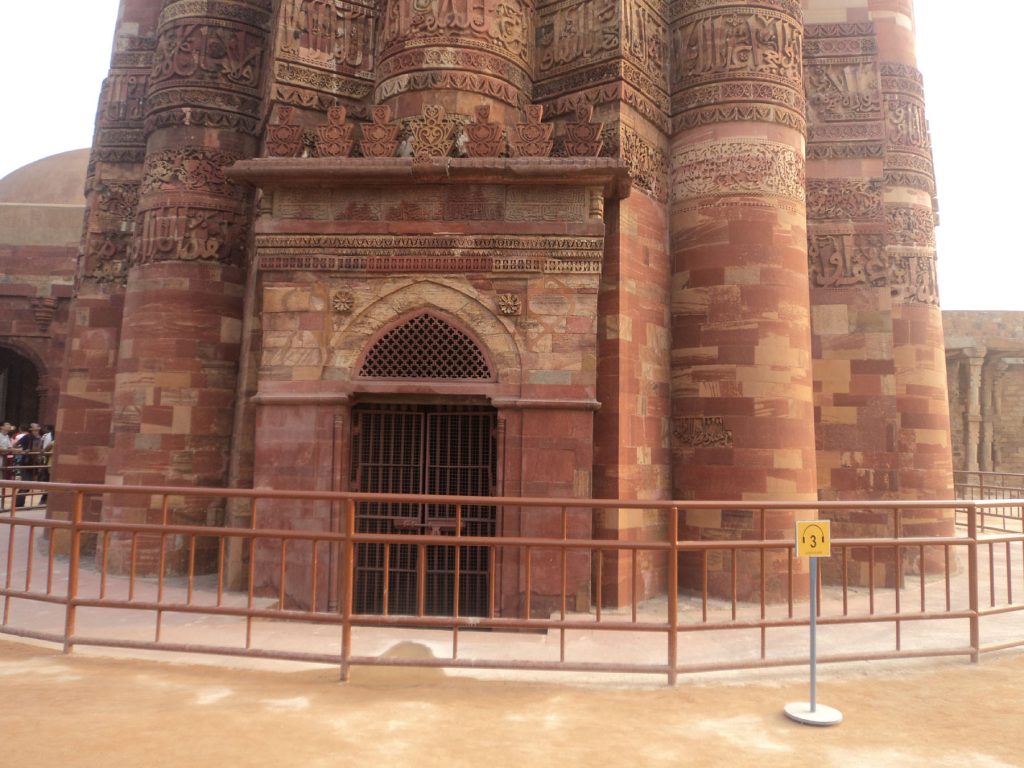
Wonderful gateway to Qutab Minar, where hundreds of steps await us to get one of the best views of Delhi, apart from feeling 800 years of history. Inscriptions in the style of Kufic calligraphy (Kufic), form regular bands throughout the Qutb Minar .
During a time , the Qutab Minar was used by kings Khilji Tughlaq to see the wild Mongol hordes when they threatened Delhi. The top of the minaret is also used as the best watch in the time of government of Tughlaq. Other important monuments that are visible from the top are the walls of Tughlaqabad, Humayun’s Tomb, Qila Purana, Firoz Shah Kotla and Jama Masjid.
Because of the earthquakes that struck Delhi more than a couple of times, the Qutab Minar had some damage, but was rebuilt and renovated by the respective rulers. During the government of Shah Firoz, due to a new earthquake the minaret suffered damages in the two upper floors, but were repaired by Firoz Shah. In 1505, again an earthquake struck hard in Delhi, in this case, the Qutab Minar was repaired by Sikandar Lodi. Later, in 1794, the minaret faced another earthquake, and in this case, Major Smith, who was also an engineer, was responsible for repairing the affected parts of the Qutab Minar.
In addition the Qutab Minar underwent during these stages of earthquakes some changes, beginning with Firoz Shah, who replaced the part for a totally new one. This was removed in the year 1848 by Lord Hardinge and can now be seen in the garden between the Bungalow Dak and the Minar. The floors built by Shah Firaz can be easily distinguished since they were built with white marble and are quite soft compared to the others.
Although it may not seem so at first glance, due to wear and tear in recent years, the Qutab Minar is not as erect as it used to be. Depending on where you look at it, there is a point where it is perceived that it is slightly inclined. In any case, the Qutab Minar is very well taken care of by the authorities as well as other historical monuments of India.
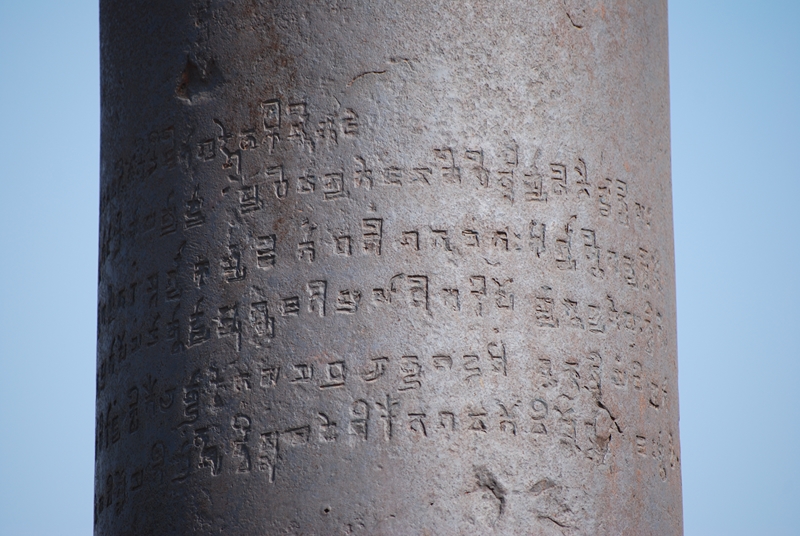
There are tombs, gates, ruins, catacombs, etc. in the Qutab Minar precinct, but the iron column near the Qutab Minar tower is one of the main metallurgical curiosities in the world, located in the Qutub complex. According to the traditional belief, anyone who can surround the entire spine with his arms, leaving the spine behind him, may have his wish granted. Due to the corrosive qualities of sweat, the government built a safety fence around the spine, so … it is no longer possible to try … so the column has stopped giving wishes. Iron quality is an excellence of technology. The softness of the abutment surface makes the abutment stainless. Only the fusion of different metals with iron produces such a high quality of softness.
To me sincerely I was fascinated by the height of the construction, the conservation and the majesty to have more than 800 years of life … an architectural jewel worth admiring …






